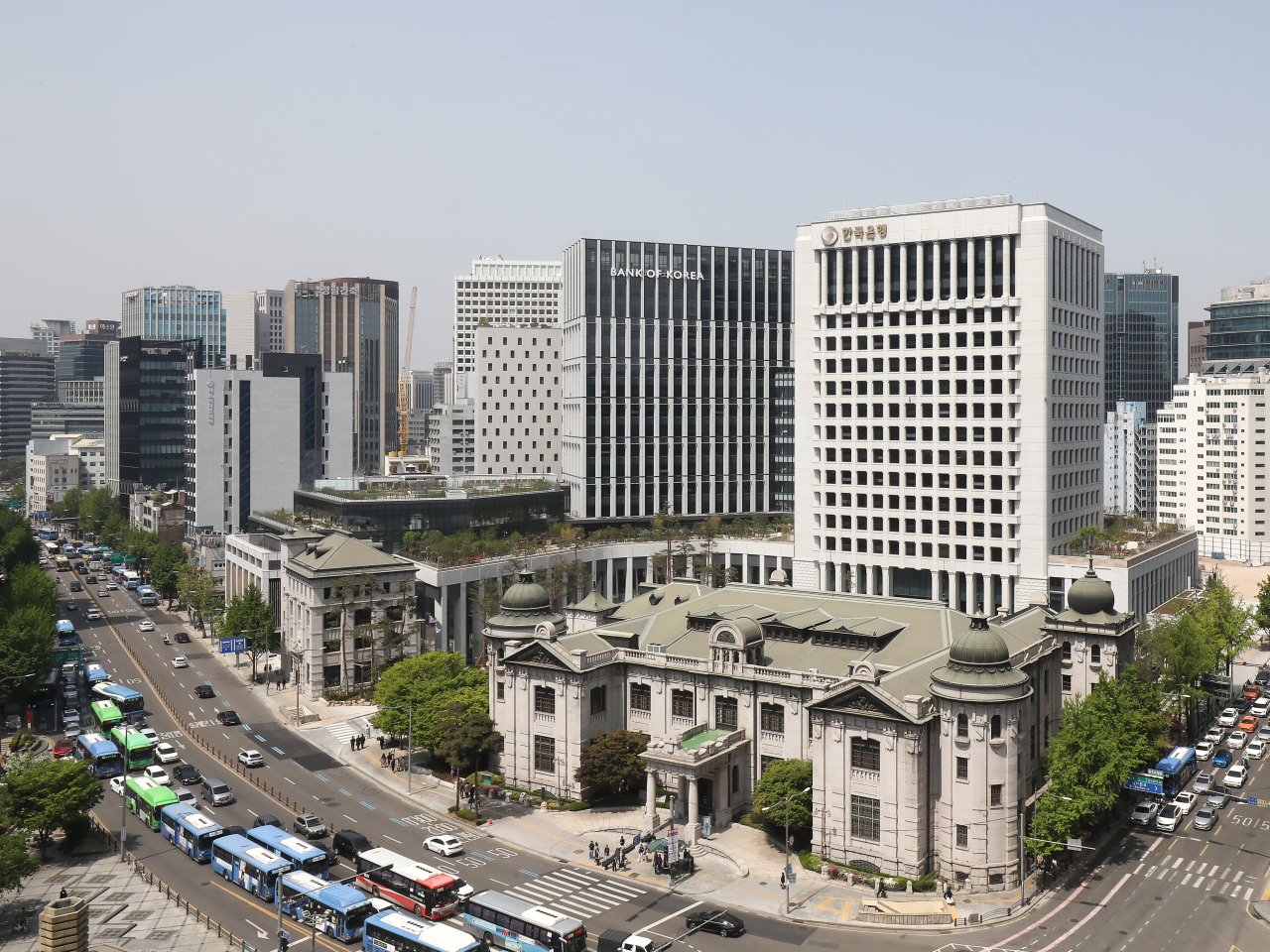 |
View of the Bank of Korea headquarters (high-rise building, center), with the Bank of Korea Museum in front, Seoul (BOK) |
The Bank of Korea is likely to maintain the current base interest rate at its next rate-setting meeting on Thursday, going for a third consecutive rate freeze amid waning inflation and a sluggish economy.
The market expects the central bank to maintain the key rate at 3.5 percent, following two previous rate freezes in February and April.
Inflation has been coming down in Korea. The consumer price index, a barometer of inflation, showed a 3.7 percent on-year increase in April, falling into the 3 percent range for the first time in 14 months since February 2022.
Another consideration for the BOK is the still slow economy.
Though the economy has been showing signs of recovery, recording a 0.3 percent growth in the first quarter on-year, it continues to remain sluggish due to weak exports. Korea reported a deficit in its trade balance for the 14th consecutive month in April.
However, the rate gap between Korea and the US remains a concern for the BOK.
With the US Federal Reserve lifting its base rate by 25 basis points earlier this month of up to 5.25 percent, the rate gap has widened to an unprecedented figure of 1.75 percentage points. If the Fed further raises the key rate by another 25 basis points next month, the gap will widen to 2 percentage points.
The market, however, deems the Fed will not raise the rate next month. CME Group's FedWatch Tool indicated an 82.6 percent chance that the Fed will hold the rate at its next rate-setting meeting, as of Sunday.
“With the Fed likely to freeze the rate next month as it has neared the end of its rate hike cycle, the Korea-US rate gap does not pressure the BOK,” analyst Ahn Ye-ha at Kiwoom Securities said.
“We expect a unanimous rate freeze decision from the BOK. But the central bank will likely maintain its hawkish stance, putting the terminal rate at 3.75 percent,” Ahn said.
Though the central bank has been holding the rate in past months, Gov. Rhee Chang-yong has stressed it is “too early” to discuss a rate cut, warning against market expectations for the BOK to cut its key interest rate anytime soon.
Joo Won, deputy director of Hyundai Research Institute, echoed the view.
“The BOK is likely to maintain the rate. The Fed’s monetary tightening cycle has nearly wrapped up. Though the rate gap is wide, the currency remains stable overall,” Joo said, underlining the fact that despite the large base rate gap, currency volatility has not escalated.
The Korean won against the dollar fell to the low 1,320 won range when the Fed announced its rate hike earlier this month.
Though the won reached a new high of 1,343 for this year on Wednesday with the bumpy US debt ceiling talks, it has remained relatively stable this month, coming under 1,350 won despite the all-time high base rate gap.
With the BOK likely to hold the rate at the upcoming meeting, eyes are on when the central bank will start its rate cut.
“If the US Fed starts a rate cut in the fourth quarter when its economy slows down due to the prolonged aggressive monetary tightening policy, Korea can follow suit,” Ahn said.
Some view that Korea can start the rate cut first, as Rhee has stressed the central bank will not “mechanically” follow the Fed's steps.
"Korea can start to cut its rate from the fourth quarter of this year, while the US is likely to start a rate cut in the first half of 2024,” Joo said. “The rate cut could come earlier in Korea, like how it began the rate hike before the US."







